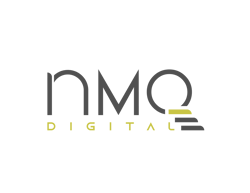Hey folks, here we are again with a new blog. This time we will focus on 5 different strategies that you can apply for predictable growth and we will elaborate each of them separately to see how they contribute to driving growth for businesses.
What is predictable growth?
For everyone’s convenience, before we dive deep into the topic, let us first start with the definition.
Predictable growth refers to a sustainable and consistent increase in a company's revenue, profit, and market share over time. Predictable growth means that a business can reliably forecast its revenue growth and profitability based on historical data, market trends, and other factors.
However, to facilitate growth, it's essential to have the necessary capabilities in place. Failure to scale up in areas such as personnel, processes, and technology, as well as the presence of diverse teams with expertise and a structured, integrated approach to work, could result in stagnation or even failure, despite predictions of a successful future.
Why is predictable growth crucial for businesses?
Predictable growth is critical for the long-term success of any business because it allows them to plan and allocate resources effectively, make informed decisions about investments, hiring, and expansion, and attract investors and financing. It also helps businesses build brand recognition and reputation, establish long-term customer relationships, achieve sustainable profitability, and manage risks.
Achieving predictable growth requires businesses to have a clear understanding of their target market, customers' needs and preferences, and competitors' offerings. It also requires companies to implement effective strategies, processes, and systems to optimize their operations and continuously improve their products and services.
However, achieving predictable growth requires a combination of strategic planning, effective execution, and ongoing monitoring and adjustment. In this context, businesses must adopt a range of growth strategies that focus on customer acquisition, retention, and satisfaction, as well as operational efficiency and employee engagement.
5 Strategies you can apply to drive predictable growth
Now that we know why predictable growth is crucial for organizations and its requirements, let us look at how we can achieve predictable growth. In this blog, we will focus on 5 strategies, which you can find below.
- Defining clear goals, which means setting specific, measurable, achievable, relevant, and time-bound (SMART) objectives.
- Understanding the customer, which involves identifying the needs, preferences, and pain points of the target audience and tailoring products and services accordingly.
- Applying a data-driven approach, which means collecting and analyzing data to make informed decisions based on empirical evidence.
- Implementing effective marketing and branding, which involves increasing brand awareness, differentiating from competitors, building customer loyalty, and creating pricing power.
- Improving operational efficiency, which involves optimizing operations, reducing costs, increasing productivity, and enhancing customer satisfaction.
Now, let's zoom into each of them separately.
1. Define clear goals and KPIs
Defining clear goals and key performance indicators (KPIs) can help drive predictable growth in several ways:
- Create Alignment: When goals and KPIs are clearly defined, everyone in the organization can align their efforts toward achieving them. Clear goals help to keep the team focused on the key priorities that drive growth. When everyone is clear on what needs to be achieved, they are less likely to get sidetracked by distractions or irrelevant tasks.
- Create Accountability: Clear goals and KPIs create accountability within the organization. When everyone knows what they are responsible for and how their performance will be measured, they are more likely to take ownership of their work and be accountable for achieving results.
- Create Transparency: Defining clear goals and KPIs can also promote transparency within the organization. Everyone can see how their work contributes to the overall goals of the company, and this transparency can help reduce confusion and miscommunication and increase motivation.
- Enable Data-Driven Decision-Making: Clear goals and KPIs provide a framework for data-driven decision-making. When everyone has access to the same metrics and data, they can make informed decisions based on real-time performance data. This can help remove subjectivity and bias from decision-making and promote more objective decision-making.
- Enable Continuous Improvement: Finally, clear goals and KPIs can promote a culture of continuous improvement. When everyone is working towards achieving specific metrics, they are more likely to identify areas for improvement and work to optimize processes and systems to achieve better results.
2. Understand your customers to improve customer acquisition and retention
Understanding the customer is essential to driving predictable growth because it enables businesses to identify the needs, preferences, and pain points of their target audience, and tailor their products and services accordingly. Here are some ways in which understanding the customer can help drive predictable growth:
- Product Development: By understanding the customer, businesses can develop products that meet the specific needs and preferences of their target audience, increasing the likelihood of product success.
- Customer Acquisition: Understanding the customer allows businesses to identify the most effective channels for customer acquisition, reducing the cost of customer acquisition and increasing the conversion rate.
- Customer Retention: By understanding the customer, businesses can provide better customer service and support, creating a better customer experience that leads to increased loyalty and retention. You can create brand advocates who will promote your business to their network.
- Increase Referrals: Satisfied customers are more likely to refer your business to others, helping you acquire new customers more efficiently and at a lower cost.
3. Apply a data-driven marketing approach
Applying a data-driven approach is essential to driving predictable growth because it allows businesses to make informed decisions based on empirical evidence rather than assumptions or guesses. Here are some ways in which applying a data-driven approach can help drive predictable growth:
- Performance Measurement: By tracking and measuring key performance indicators (KPIs), businesses can monitor their performance, identify areas for improvement, and adjust their strategies accordingly, leading to predictable growth.
- Market Analysis: By analyzing market trends and customer behavior, businesses can identify new opportunities for growth and develop strategies to capitalize on them.
- Targeting: Data-driven marketing allows businesses to target their marketing efforts more effectively by identifying the most promising customer segments and tailoring their messaging and channels to reach them. By using data to inform marketing decisions, businesses can reduce wasted advertising spend and improve conversion rates.
- Personalization: Data-driven marketing can also help businesses personalize their marketing messages and experiences based on individual customer preferences and behaviors. By using data to understand customer needs and preferences, businesses can create personalized experiences that improve customer engagement and satisfaction.
- Optimization: Data-driven marketing can help businesses optimize their marketing campaigns and improve their return on investment (ROI). By using data to track and measure campaign performance, businesses can identify what's working and what's not, and make data-driven decisions to optimize their campaigns for maximum impact.
- Predictive Analytics: Data-driven marketing can also help businesses use predictive analytics to forecast future customer behavior and identify new opportunities for growth. By analyzing past customer behavior and identifying patterns and trends, businesses can make informed decisions about future marketing strategies and investments.
- Customer Insights: Data-driven marketing can help businesses gain valuable insights into customer needs, preferences, and behaviors, which can inform product development and customer service initiatives. By using data to understand customer needs, businesses can create products and services that better meet those needs and provide more personalized customer experiences.
- Resource Allocation: By analyzing data on the effectiveness of different channels and strategies, businesses can allocate resources more effectively, increasing the efficiency of their operations and driving predictable growth.
- Risk Management: By analyzing data on potential risks and opportunities, businesses can make informed decisions and mitigate risks, reducing the likelihood of unexpected setbacks that could impede growth.
4. Implement an effective marketing and branding
Effective marketing and branding are essential to driving predictable growth because they help businesses differentiate themselves from competitors, establish a strong brand identity, and build trust and loyalty with their target audience. Here are some ways in which effective marketing and branding can help drive predictable growth:
- Increased Awareness: Effective marketing and branding can help create awareness and recognition for a business among its target audience. By promoting a clear and consistent brand message across various channels, businesses can build a strong brand identity that resonates with customers and helps differentiate the business from competitors.
- Value Proposition: Effective marketing and branding can also help businesses communicate their value proposition to customers. By promoting the unique benefits and features of their products or services, businesses can create a compelling reason for customers to choose their brand over competitors.
- Brand Identity: Effective branding can help businesses establish a strong brand identity, creating a recognizable and memorable brand that customers trust and choose over others.
- Credibility: Effective marketing and branding can also enhance a business's credibility and reputation. By demonstrating expertise and thought leadership in their industry, businesses can build trust with customers and position themselves as leaders in their field.
- Customer Loyalty: Effective marketing and branding can also help build customer loyalty. By creating a positive and memorable customer experience through branding and marketing initiatives, businesses can increase customer satisfaction and encourage repeat business and referrals.
- Expansion: Effective marketing and branding can help businesses expand their reach and enter new markets. By creating a strong brand identity and message, businesses can appeal to new customer segments and expand their customer base.
- Pricing Power: Effective branding can allow businesses to charge premium prices for their products and services, creating a perception of higher value and quality.
5. Improve operational efficiency and employee satisfaction
Improving operational efficiency is critical to driving predictable growth because it allows businesses to optimize their operations, reduce costs, and increase productivity. Here are some ways in which improving operational efficiency can help drive predictable growth:
- Cost Savings: Improving operational efficiency can lead to cost savings by reducing waste, improving productivity, and streamlining processes. These savings can be reinvested in the business to drive growth.
- Increased Productivity: By improving operational efficiency, businesses can reduce waste and inefficiencies, increasing productivity and output, which leads to predictable growth.
- Faster Time-to-Market: Improving operational efficiency can enable businesses to bring products and services to market faster, reducing time-to-market, and increasing revenue growth.
- Customer Satisfaction: Improving operational efficiency can also lead to improved customer satisfaction by reducing wait times, improving delivery times, and providing better service. Satisfied customers are more likely to return and recommend the business to others, driving predictable growth.
- Employee Satisfaction: Improving operational efficiency can also lead to improved employee satisfaction by reducing stress, improving work-life balance, and providing a more positive work environment. Satisfied employees are more productive and engaged, leading to improved business performance and growth.
- Innovation: Improving operational efficiency can also free up resources and allow businesses to invest in innovation and new product development. This can lead to new revenue streams and long-term growth opportunities.
- Scalability: Improving operational efficiency can also prepare businesses for growth by making them more scalable. Streamlined processes, effective systems, and engaged employees are all critical to managing growth effectively.
- Better Decision Making: By having access to accurate and timely data on operations, businesses can make better decisions, reducing the likelihood of unexpected setbacks, and driving predictable growth.
In a nutshell, if you are looking for ways to grow more predictably and scale your team and organization to support this growth, there are five strategies you can apply. Make sure you define clear goals and KPıs for your business and your teams, make an effort to understand your customers, apply a data-driven approach, increase the efficiency of your marketing and branding efforts, and finally increase operational efficiency and employee satisfaction. If you are not sure where to start, NMQ Digital is here to help you with its Digital Consultancy services.





